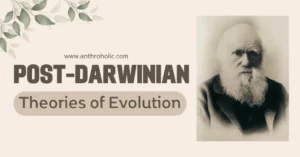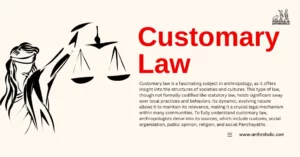AI Answer Evaluation Platform Live Now. Try Free Answer Evaluation Now
Bilateral Descent
In the realm of cultural anthropology, understanding societal structures and norms is essential. One such structure we shall explore is the notion of bilateral descent – a system of family lineage tracing through both the paternal and maternal lines.

Bilateral Descent Definition
Bilateral descent, also known as cognatic descent, is a type of kinship system where an individual belongs equally to the father’s and mother’s lineages [1]. Unlike unilineal descent systems such as patrilineal (father’s line) or matrilineal (mother’s line) descent, bilateral descent creates a more extensive and socially diverse network of kinship.
Understanding the Prevalence and Applications
Bilateral descent systems are found predominantly in societies where mobility is high, and extended kinship relationships are crucial for social and economic reasons. In industrialized nations like the United States, bilateral descent is the standard system [2].
In these societies, each nuclear family operates as a separate entity, and family members maintain connections with relatives on both sides. For example, during holiday celebrations, it’s common to see American families alternating between visiting maternal and paternal relatives, symbolizing the bilateral descent system [3].
Critiques and Advantages of Bilateral Descent
While bilateral descent may appear to create a harmonious balance, critics argue it can result in fragmented family networks due to the lack of central authority, as observed in unilineal descent groups [4].
However, advocates for bilateral descent point out that it allows for flexibility and adaptability. This system facilitates more extensive networking opportunities, as it provides a broader scope of familial support and resources in times of crisis or economic need [5].
Anthropological Implications
In anthropology, bilateral descent has been studied for its influence on societal structure and dynamics. Given the equal weight of paternal and maternal lineages, this system tends to reflect and support societies that value gender equality. Furthermore, as there is no inherent preference for either side, this may potentially reduce societal conflicts related to inheritance or lineage pride [5].
From a societal perspective, bilateral descent fosters a sense of individual autonomy, as ties to kin are more dispersed. It represents societies that lean towards flexibility and adaptability in their social structures and norms, rather than rigid, predefined roles based on lineage [6].
Conclusion
In conclusion, bilateral descent, while not as concentrated as unilineal systems, offers a uniquely balanced and flexible approach to family lineage. Its anthropological significance lies in its reflection of societies valuing mobility, gender equality, and extended kinship ties. As societies continue to evolve, so too will our understanding and interpretation of these descent systems.
Suggested Articles
| What is Descent? | Principles & Types | Matrilineal Descent |
| Ambilineal Descent | Double Descent | Patrilineal Descent |
| Descent Groups | Descent and Alliance | Unilineal Descent |
References
[1] Parkin, R. (1997). Kinship: An Introduction to Basic Concepts. Blackwell Publishers.
[2] Keesing, R. M. (1975). Kin Groups and Social Structure. Holt, Rinehart and Winston.
[3] Murdock, G. P. (1949). Social Structure. The Macmillan Company.
[4] Fortes, M. (1953). The Structure of Unilineal Descent Groups. American Anthropologist, 55(1), 17–41.
[5] Schneider, D. M. (1984). A Critique of the Study of Kinship. University of Michigan Press.
[6] Peletz, Michael G. “Kinship Studies in Late Twentieth-Century Anthropology.” Annual Review of Anthropology, vol. 24, 1995, pp. 343–72. JSTOR, http://www.jstor.org/stable/2155941. Accessed 21 June 2023.




